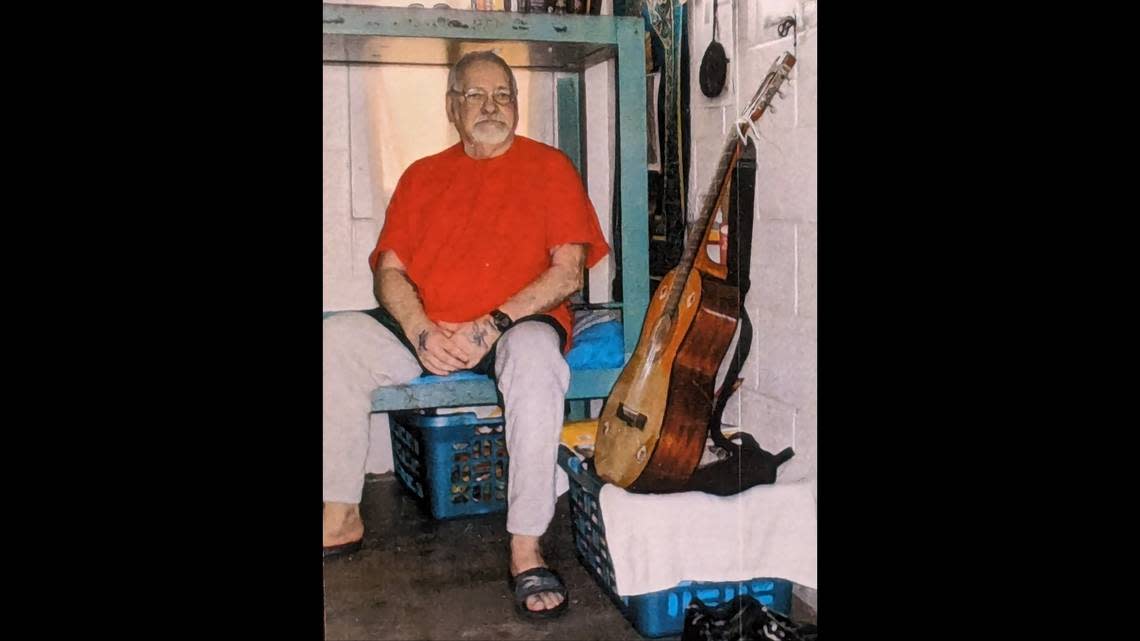I was a witness at Thomas Creech’s scheduled execution in Idaho. Here’s what I saw | Opinion

After Thomas Creech was wheeled into the execution chamber on a gurney, hoisted by six corrections officers onto the execution bed and strapped down, he looked to his right toward the room where witnesses were sitting.
He extended the fingers on his right hand, which was strapped down at the wrist, and gave a little wave.
His eyes watered, and he began to sniffle and puff, and then he mouthed two words.
Even though a microphone hung from the ceiling above him, whatever he said wasn’t audible, but it looked like, “I’m sorry.”
I was one of four media witnesses Wednesday to the scheduled execution by lethal injection of Creech, 73 — convicted of five murders, including three in Idaho, and suspected of many others.
After nearly an hour and eight attempts to find a suitable vein in which to administer an IV to deliver the lethal medications, staff were unable to continue, and the execution was halted.
Creech was laid out parallel to the witness areas, and the media witness room was at the foot of Creech’s bed. Four 5-by-5-foot windows gave us a clear view of Creech, who was wearing a dark green prison shirt and pants, and orange slip-on rubber shoes. He wore thick black-rimmed glasses and had a full white beard and mustache.
At one point, Creech looked into a separate media witness room, where I and other reporters were sitting, and waved his fingers at us.
Several times during the hourlong procedure, Creech looked back to his right into his witness room, which was not visible to us in the media room, to mouth words that we couldn’t hear and to raise the fingers of his right hand to point or wave.
Other times, he appeared to fall asleep and would snore. Idaho Department of Correction Director Josh Tewalt said later that Creech had been up until 5 a.m. with his lawyers and his wife and that he had taken a sedative before the procedure, making him drowsy.
I couldn’t help but be reminded of somebody’s grandfather dozing in an easy chair.
Each attempt to find a vein was a multistep process, including inflating a blood pressure cuff to try to make veins more prominent, sterilizing the skin and numbing the area. Each attempt took about four to six minutes.
At the end of each unsuccessful attempt, I could feel a sense of relief all around, that certain death would be delayed at least a few minutes more.
Only at one attempt — to put an IV in his right hand near his index finger — did Creech seem to have discomfort. Otherwise, he complained just once about his leg hurting a bit because of a cramp.
After the fourth unsuccessful attempt, I began to think that this wasn’t going to happen at all, that the medical staff would not be able to find a vein, and that there would be no execution after all.
I could only imagine what was going through Creech’s mind, if he was having those same thoughts — and each time the medical staff inserted a needle trying to establish an IV, was he hoping beyond hope that they would once again fail to find a suitable vein?
The three medical staff members were dressed in blue scrubs head to toe, with their faces completely covered with white cloth and safety glasses.
Idaho Department of Correction Director Josh Tewalt stood stone-faced in the back right corner.
Idaho Maximum Security Institution Warden Tim Richardson stood at a podium at Creech’s feet the entire time. Although he was stone-faced as well, I detected that he was distraught, and I thought his eyes welled a little bit when Creech was brought in.
At 10:58 a.m., when it was declared that the execution would be halted, Richardson patted Creech on the leg and then rested his hand on Creech’s stomach.
Creech has developed a reputation as “a model prisoner” over the past couple of decades, forming bonds with prisoners and prison staff alike.
Looking at Creech lying helpless and old on the table, I understood one of the arguments against executing Creech: The state is trying to end the life of a man who is not the same person who committed those heinous crimes some 40 years ago. The state is wanting to execute a senior citizen.
I’m still on the fence about the death penalty, and watching Wednesday’s unsuccessful execution didn’t do anything to help me make up my mind.

